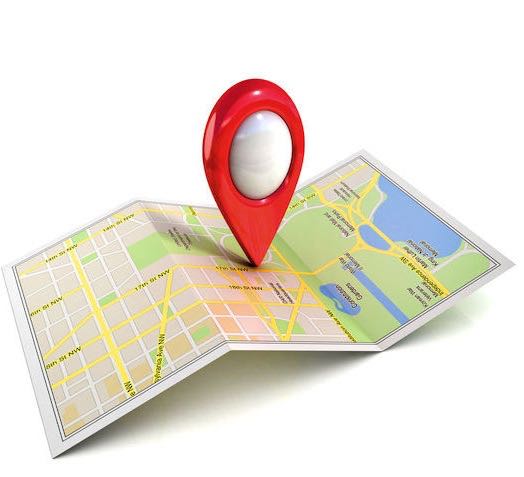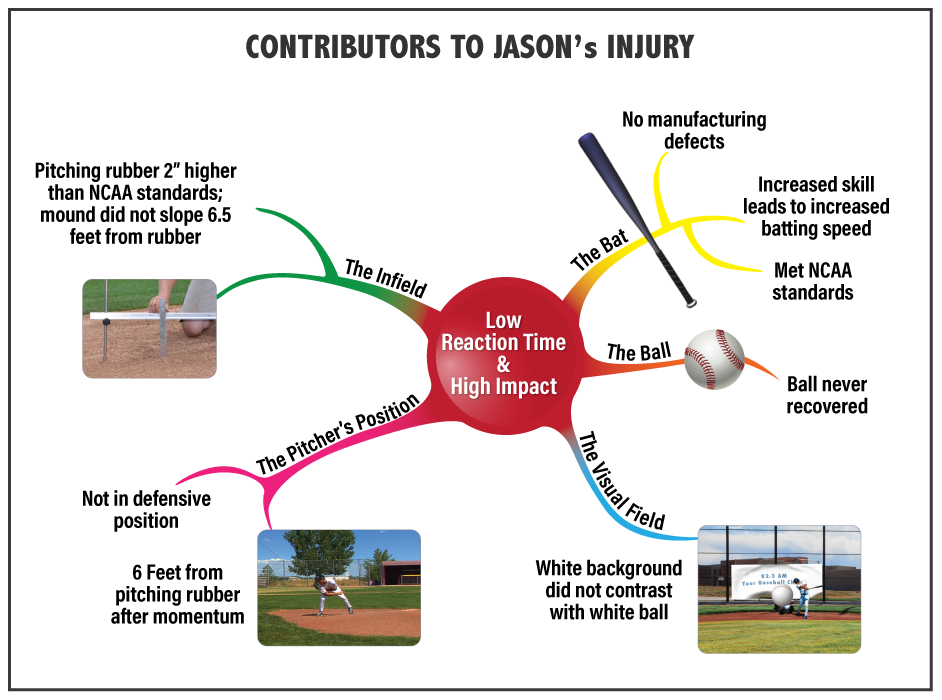By Dr. Ken Broda Bahm:

If you’re a trial lawyer, chances are very good that you have marked up a flip chart or whiteboard in order to get a handle on your case. With its boxes, arrows, and circles, we might view the resulting “map” as a kind of metaphor: The ideas of the case are laid out in space as if it was a kind of territory. The more we learn about cognition, however, the more it becomes clear that this actually isn’t a metaphor. One interesting new development in cognitive research carries some practical implications for what we are doing when we use these maps to analyze and communicate our cases.
The cognitive research story begins with the broad question of why we think. After all, from evolutionary perspective, we need to fight off predators, find food, and find mates. But we don’t really need higher order thinking. We could survive and reproduce without philosophy, art, literature, or even necessarily a concept of self. So why did those things develop? According to research coming from the Max Planck Institute for Human Cognitive and Brain Sciences (Bellmund et al., 2018) and summarized in a recent ScienceDaily release, it might come down to a novel act of repurposing. When we or other mammals move around in an environment, cells in the hippocampus and grid cells in the entorhinal cortex form a connection that allows orientation in space and navigation. Recent Nobel-winning research shows, however, that in humans those cells are active not just when exploring environments, but also when learning new things. When research participants are learning about the traits of various kinds of birds, for example, it appears as if the brain is sorting the new information into physical piles and then moving among those piles. Our ability to spatially navigate a physical world is also used to organize and navigate a world of concepts. According to Jacob Bellmund, the first author of the study, these discoveries have led to a new theory on human cognition: “By connecting all these previous discoveries, we came to the assumption that the brain stores a mental map, regardless of whether we are thinking about a real space or the space between dimensions of our thoughts. Our train of thought can be considered a path though the spaces of our thoughts.”
So if our brains have creatively highjacked the navigation system in order to use our spatial abilities for cognition, language, and reasoning — like a repurposed version of Google Maps — what does that mean for effective communication and persuasion? It means that we ought to think of that notion of space when designing and conveying messages. For the litigator in the courtroom, it is critical to create a conceptual world that jurors will be able to easily navigate.
The Conceptual Space
Appreciating the importance of spatial thinking starts with asking the question, what is the “territory” of your case? In other words, what are the key conceptual landmarks and what are the roads and relationships between them? If you don’t already have the habit of sketching these out on a piece of scratch paper or on a whiteboard, then you should develop that habit. Seeing it laid out can help to develop the main categories, or “chunks” that you will then use to make it understandable to a jury. Personally, I believe that typing text into a computer is never going to be the same thing as laying those ideas out in physical space in front of you. When I am thinking of case themes, for example, I will usually step away from the keyboard and the screens, and start sketching using key words and arrows. Sometimes it is a circle of ideas all radiating toward one central point, and sometimes I divide the page with terms representing good on one side and bad on the other: God and devil terms.
The Graphic Space
If it is useful for you to think about a case by laying it out visually, it will be useful to jurors and judges for the same reasons. So think visually as much as possible, and put those visuals in front of the jurors. Our own studies have shown that doing that increases your credibility while also aiding the jurors’ comprehension. Even a bullet list of thoughts is going to be helpful in conveying categories and priorities. But more detailed graphics will be even more useful, especially if you think creatively about the arrangement and think about how the viewer’s eyes will travel through it, usually from left to right and top to bottom.
For example, a fact pattern in which a baseball bat manufacturer defends against a claim by a pitcher struck and injured by a batted ball can illustrate. In this case, the goal of the defense is to identify the bat as just one factor among many as a way of reducing liability, causation and damages. Here is how a “mental map” of how that point might look:

The Courtroom Space
The conceptual space of the case can also interact with the literal space of the courtroom. For example, one old technique I remember from my days of competitive public speaking is the idea of having main points occupy a physical space. In other words, if you are conveying four central ideas, then stand in four different spots as you deliver them and move during your transitions. Of course, in some courtrooms you need to stick to the lectern, but even small differences (like standing to one side or the other side of the lectern) can help to physically differentiate the points.
One other implication of courtroom space is to be aware of proximity. When allowed, lawyers like to get close to the jurors. Don’t get so close as to invade personal space (i.e. no leaning into the jury box), but being relatively close allows you to effectively adapt and connect with jurors. The same goes for witnesses as well. If you have a good reason to get the witness out of the witness box (to demonstrate something, for example) use it. Experts especially will be better able to connect if they can even temporarily vacate the box in order to use the courtroom space as a teacher would.
Other Posts on Cognition:
- See Ideology as Cognitive and Not Just Political
- Persuade With Participation, Part Two: Learn from Modern Cognitive Science
- Account for Social Facts
Bellmund, J. L., Gärdenfors, P., Moser, E. I., & Doeller, C. F. (2018). Navigating cognition: Spatial codes for human thinking. Science, 362(6415), eaat6766.
Image credit: 123rf.com, used under license